Milkvines, as their name implies, are members of the milkweed family, the Apocynaceae, known for their white, milky sap. They are herbaceous, twining vines with broad, opposite, ovate (often heart-shaped) leaves. In Central North Carolina these native perennials are often found in power lines, at the edge of woodlands, and climbing fences along roadways.
The least known and recognized of the group is Gonolobus suberosus var. suberosus, whose common names are Eastern Anglepod or Angularfruit Milkvine . Although the vines can be several meters long, the flowers are not showy and do not occur in large clusters, but are scattered in small groups, often covered by the leaves. To a passing observer, they just look like nondescript vines. The photo below shows the typical appearance of a Gonolobus flower, which has a dark blue center with green on the perimeter of the petals.
An unusual color variant is sometimes seen, with the green of the flower replaced by yellow. Just the small addition of a brighter color makes the vine much easier to spot and identify. See below.
Matelea carolinensis, Carolina Spinypod or Maroon Carolina Milkvine, is common and widespread in North Carolina. The foliage is much more open in this species, and the dark maroon, clustered flowers call attention to the vine. The flowers of Matelea carolinensis have wide, reflexed petals.
There are several, unusual color variants in Matelea carolinensis also, and these are seen much less often than the yellow Gonolobus. Pictured below are flowers that are a yellow- tinted light maroon color.
Another color variation is a creamy yellow. This plant was near the one featured above.
Matelea decipiens, Deceptive Spinypod or Oldfield Milkvine, is the third member of this group, far more uncommon in North Carolina than the other two, although it is frequently seen in Durham and Wake Counties over mafic rock. Mafic rock is rich in magnesium and iron. The primary way that it can be distinguished from M. carolinensis is by the form of the flowers. In Matelea decipiens, the flowers have ascending, somewhat ribbon-like petals that are narrower at the base than those of M. carolinensis.
Although distinguishing the three milkvines is primarily dependent on their flowers, it is possible to differentiate Gonolobus from the two Mateleas by differences in their leaves. Below are the typical heart-shaped leaves of Matelea carolinensis. The leaves have a light green color and the surface is soft and fuzzy.
Gonolobus leaves are a darker green and the surface is irregular and crinkled. The leaf is elongated into a spade shape rather than a heart shape. The largest leaves have pronounced basal lobes that sometimes overlap.
The leaves below are placed side by side for better comparison, Matelea carolinensis on the left and Gonolobus on the right.

Matelea carolinensis and Gonolobus suberosus var. suberosus
Carolina Spinypod and Eastern Anglepod
Leaves
Matelea carolinensis and Matelea decipiens can not be distinguished from each other by leaf shape. In fact, at times the flower structures themselves can be difficult and ambiguous. In mixed populations, intermediate forms can be seen, and changes in flower morphology can be seen among flowers on the same vine depending on whether they are on the lower or upper parts of the vine. There is a possibility that taxonomists will soon be taking another look at their classification.
Herb Amyx

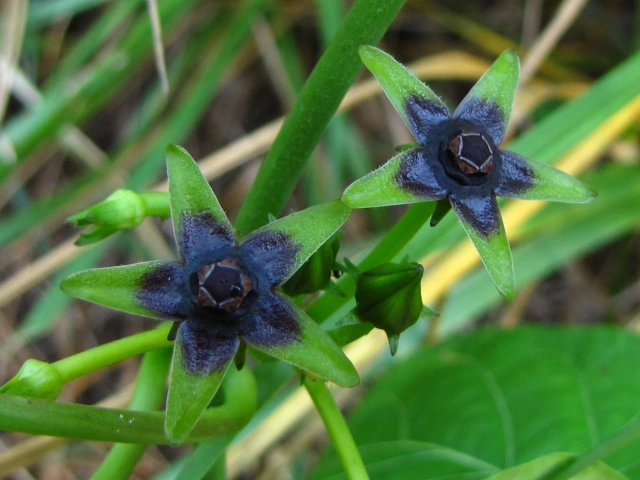



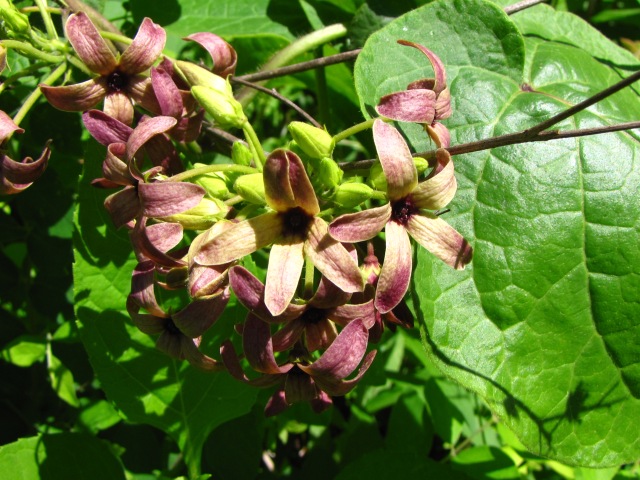
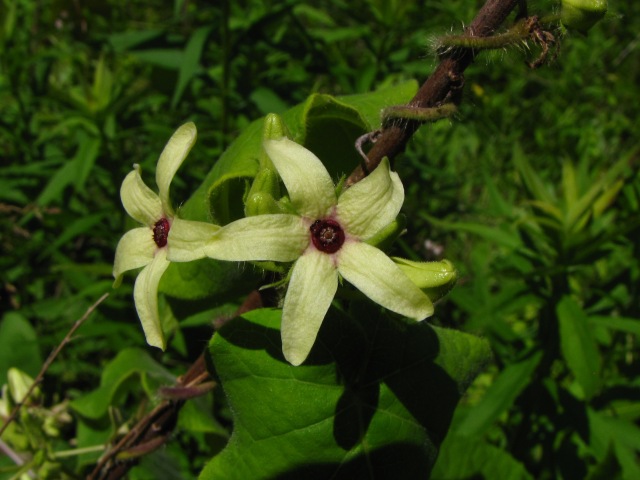


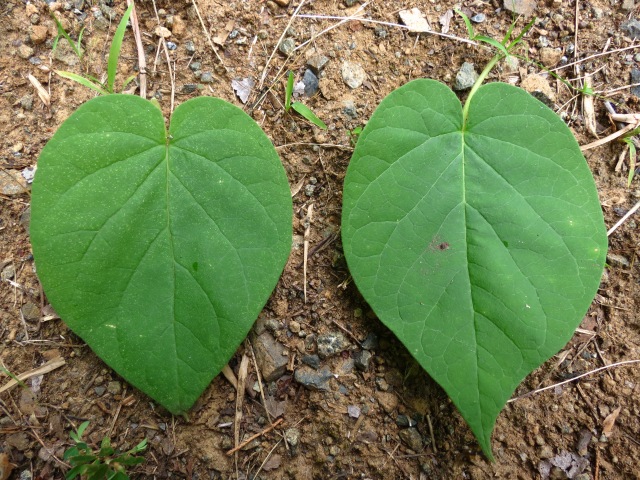
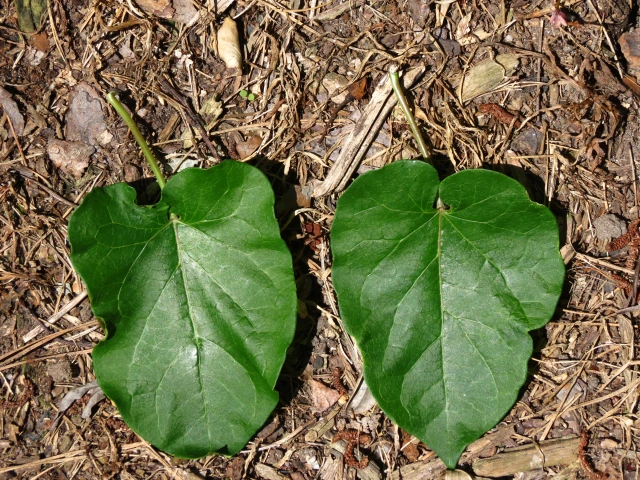
Herb, absolutely fascinating. thanks!
Herb, thank you the article – it was fascinating! I had been trying to find more information about the various milkvines of the southeastern U.S., and your article helped a lot. A few months ago I found and photographed some examples of Metelea carolinensis here in Cobb County, Georgia. Here is one climbing over a milkweed:

Today I noticed and photographed the spiny pod that is typical of this species. But today I also ran across a similar-looking vine just a few miles away, and then I noticed a smooth, sharply angular pod growing on it. So in fact I had stumbled across a specimen of Gonolobus suberosa. A pair of photos contrasting these two pods would be an interesting addition to your article!
– Philip Bouchard
Thanks for your comments and for the beautiful photograph. Including photos of the pods is an excellent idea. I hope to add them sometime in the next few months.
Still Waiting for the Pictures!
The pictures are featured in a separate article. The article and the photos of the milk vine pods are located at this link: